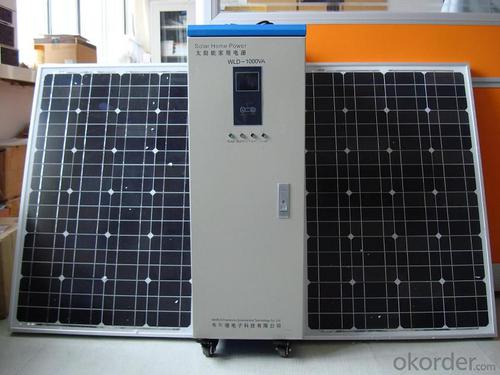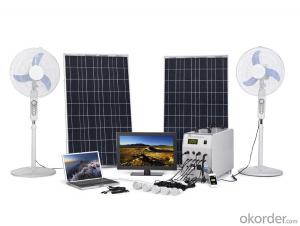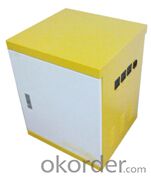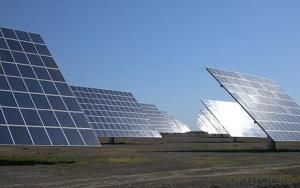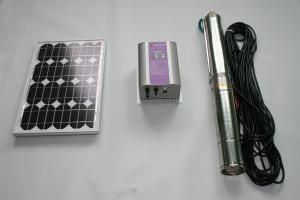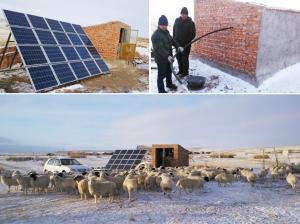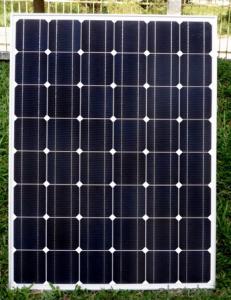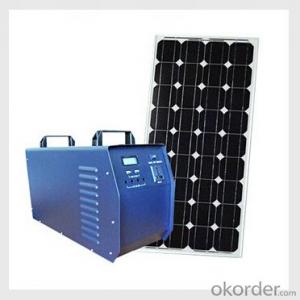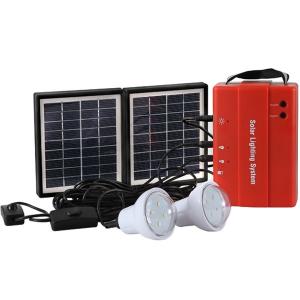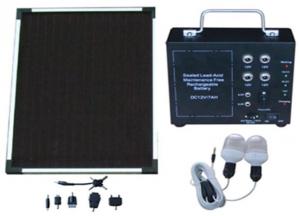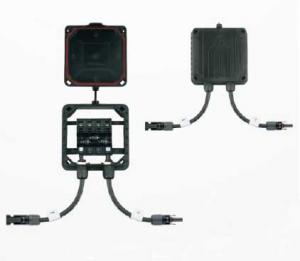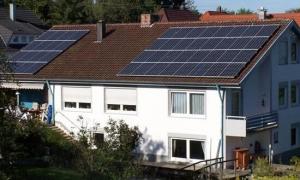Business Solar Energy Systems for Home Solar Power
- Loading Port:
- China Main Port
- Payment Terms:
- TT OR LC
- Min Order Qty:
- -
- Supply Capability:
- -
OKorder Service Pledge
Quality Product, Order Online Tracking, Timely Delivery
OKorder Financial Service
Credit Rating, Credit Services, Credit Purchasing
You Might Also Like
Specifications
3000w home solar power system/stand alone solar power system
1.10W7AH solar energy kit
1.Attachments:1x3W/12V LED Bulb*2, Phon
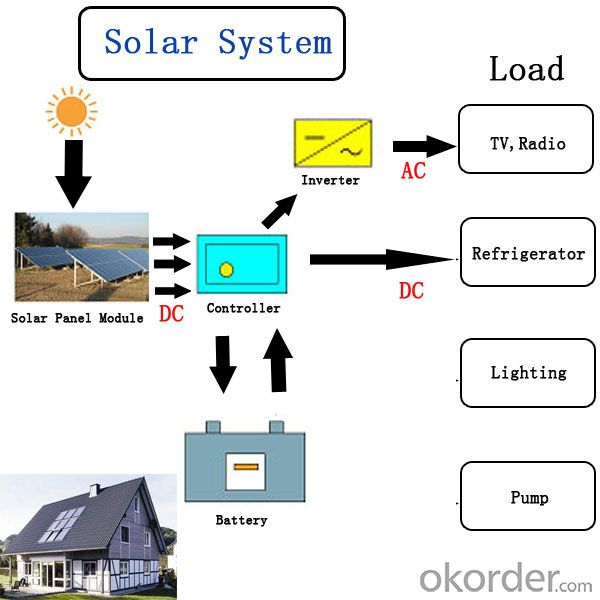
| Solar Panel | |||||||
| Type | T2-160W |
| |||||
| Rated Maximum Power | 160W | ||||||
| Maximum Power Voltage (Vmp) | 36V | ||||||
| Maximum Power Current (Imp) | 4.44 | ||||||
| Open Circuit Voltage(Voc) | 42.48V | ||||||
| Short Circuit Current(Isc) | 4.89 | ||||||
| Power Toerance | ±3% | ||||||
| Maximum System Voltage | 1000V | ||||||
| Operating Temperature | -40℃~+85℃ | ||||||
| Standard Test Conditions | AM1.5 100mW/cm2 25’C | ||||||
| Size | 1580*808*35MM | ||||||
| Weight | 16.5KG | ||||||
| Quantity | 8PCS | ||||||
| Controller | |||||||
| System voltage | 48V | Balance charge voltage | 58.4V±1% | ||||
| System current | 30A | Increase charge voltage | 57.6V±1% |
| |||
| No-load loss | <15mA | Discharge protection voltage | 44.4V±1% | ||||
| Solar energy input voltage | <100V | Discharge protection voltage | 51.2V±1% | ||||
| Over voltage protection | 66V | Work temperature | -25℃to+60℃ | ||||
| Over voltage recovery | 60V | temperature | -4.0mv/℃/2V | ||||
| Over-load, short circuit protection | 1.25 times rating current 30S;1.5 times rating current 10S overload current protection;≥3 times rating current short circuit protection | ||||||
| Inverter | |||||||
| Rated power | 3000W | ||||||
| AC input | Voltage | 140V-275VAC | |||||
| Input Frequency | 40~60Hz | ||||||
| Charge current | ≤10A | ||||||
| DC voltage range allowed | 48V | ||||||
| AC output | Voltage | 110V/220/230/240VAC±5% | |||||
| Frequency | 50/60HZ±0.5 | ||||||
| Wave from | Sine-wave | ||||||
| Inverter efficiency | 80-90% | ||||||
| Work environment | Working temperature | -25℃~+50℃ | |||||
| Relative humidity | <90%,no condensing | ||||||
| Altitude | <1 500m | ||||||
| noise | ≤40dB | ||||||
| Protection | Battery under-voltage protection, battery over-voltage protection, output overload protection, over-current protection, Overload 150%, 10 seconds | ||||||
| power box | 600*490*470 | ||||||
| Weight | 47kg | ||||||
| Battery |  | ||||||
| Nominal capacity | 120AH | ||||||
| Dimensions | 409*174*240mm | ||||||
| Weight Approx | 34kg | ||||||
| Quantity | 8pcs | ||||||
| Accessories |    | ||||||
| PV module mounting system | 3000*150*150*1set Weight:36KG | ||||||
| cables | 80M Weight:6.4KG | ||||||
| battery box | size:750*580*180 15KG | ||||||
| User manual | 1pcs | ||||||
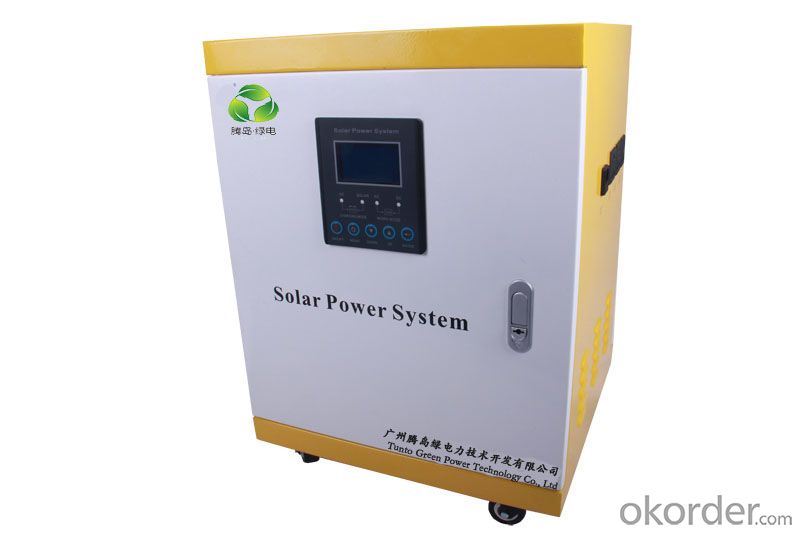
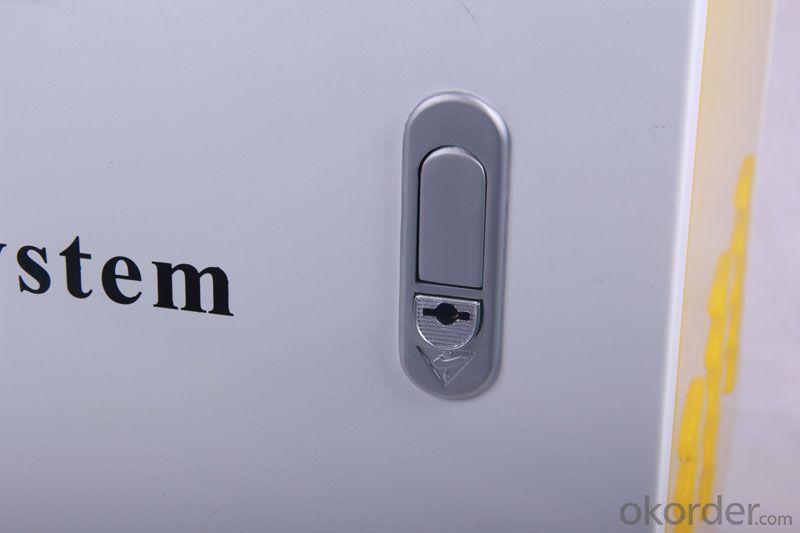
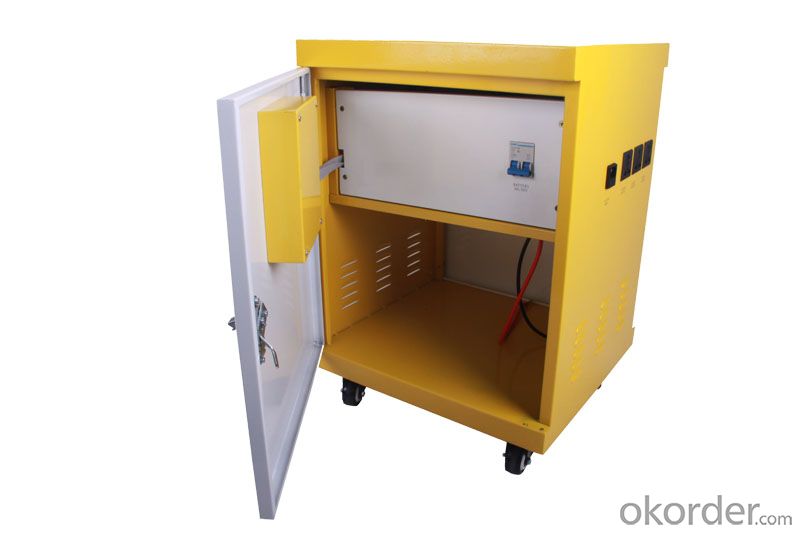

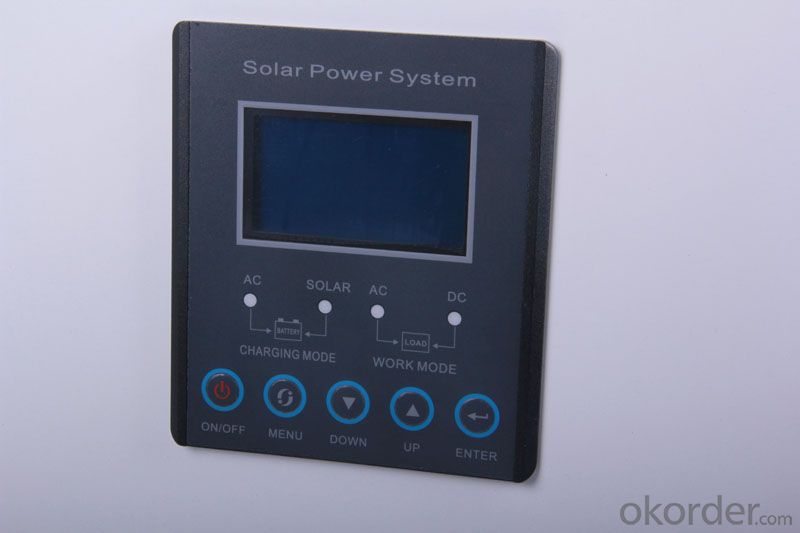
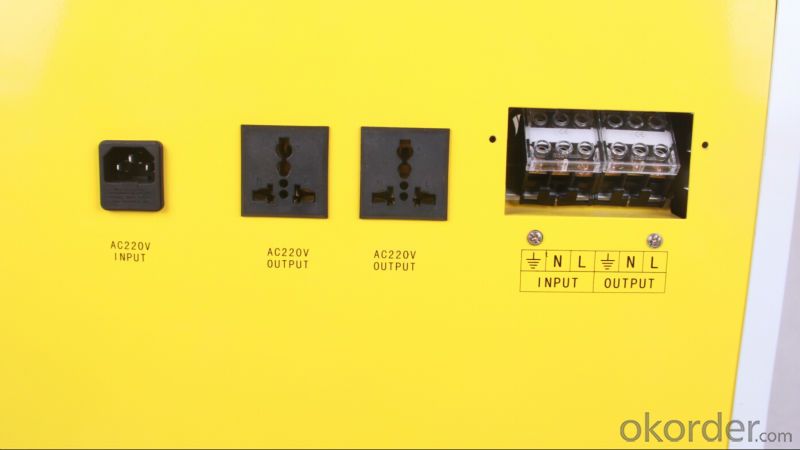
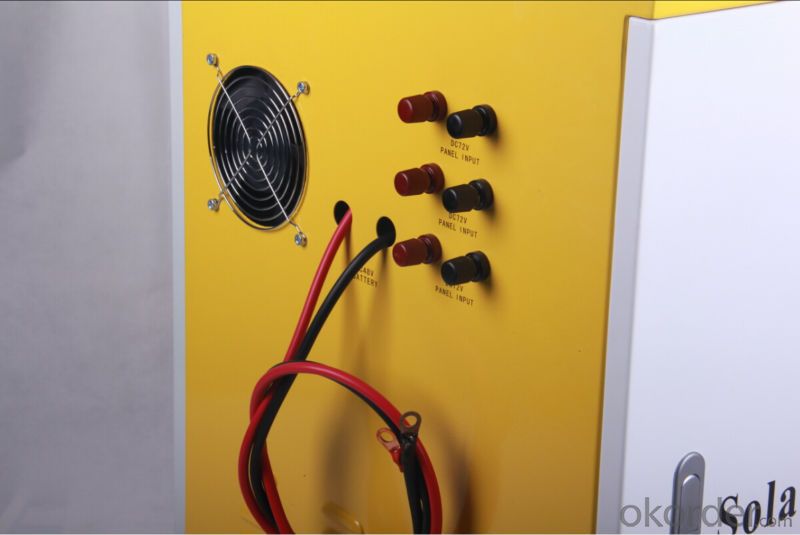
- Q: Can solar energy systems be used for powering water pumping systems?
- Yes, solar energy systems can be used for powering water pumping systems. Solar-powered water pumping systems use photovoltaic (PV) cells to convert sunlight into electricity, which can then be used to power water pumps. This provides a sustainable and cost-effective solution for pumping water in remote areas or locations without access to electricity grids.
- Q: Can solar energy systems be used in areas with limited access to solar grounding equipment?
- Yes, solar energy systems can still be used in areas with limited access to solar grounding equipment. While proper grounding is important for safety and system performance, there are alternative methods available that can be used in such areas. These methods may involve using specialized mounting systems, such as pole-mounted or ballasted systems, or utilizing ground-mount systems that do not require extensive grounding equipment. It is essential to consult with solar energy professionals or engineers to determine the most suitable and safe approach for installing solar energy systems in these situations.
- Q: How do solar energy systems impact energy security?
- Solar energy systems have a positive impact on energy security as they diversify the energy sources and reduce reliance on fossil fuels. By harnessing the abundant and renewable sunlight, solar energy systems provide a stable and reliable source of electricity, decreasing the vulnerability to disruptions in fossil fuel supply chains. Additionally, the decentralized nature of solar power allows for distributed energy generation, reducing the risks associated with centralized energy systems. Overall, solar energy systems enhance energy security by promoting sustainability, resilience, and independence in the energy sector.
- Q: Can solar energy systems be used for transportation?
- Yes, solar energy systems can be used for transportation. Solar-powered vehicles, such as solar cars, solar boats, and solar planes, have been developed and successfully used for transportation purposes. These vehicles harness the energy from the sun through solar panels, converting it into electricity to power their propulsion systems. While solar energy may have limitations in terms of efficiency and range, advancements in technology are continuously improving the viability of solar-powered transportation.
- Q: What is the impact of hurricanes on solar panels?
- Hurricanes can have a significant impact on solar panels. The high winds associated with hurricanes can potentially damage or dislodge solar panels from their mountings, especially if they are not properly secured. This can result in the complete destruction of the panels or render them ineffective in generating electricity. Additionally, flying debris during a hurricane can cause physical damage to the solar panels, such as cracks or shattered glass. This damage can impair the functionality of the panels and decrease their efficiency in converting sunlight into electricity. The heavy rainfall that often accompanies hurricanes can also pose a threat to solar panels. If water seeps into the panels, it can cause electrical short circuits or damage to the internal components, rendering them unusable. Furthermore, hurricanes can cause power outages, which can affect the functionality of solar panels. If the electric grid is down, the solar panels may not be able to send excess energy back into the grid or receive power from it, limiting their ability to generate electricity. However, it is worth noting that solar panels are designed to withstand various weather conditions, including strong winds and heavy rain. Properly installed and maintained solar panels can have a higher likelihood of surviving a hurricane with minimal damage. Additionally, advancements in solar panel technology, such as stronger glass and improved mounting systems, are continuously being made to enhance their resilience to extreme weather events. Overall, while hurricanes can have a negative impact on solar panels, with proper precautions and maintenance, their durability can be improved, making them a viable and sustainable energy option even in hurricane-prone areas.
- Q: How does the angle of solar panels affect their performance?
- The performance and overall efficiency of solar panels are greatly influenced by their angle. Various factors, including geographical location, time of year, and the specific application, determine the ideal angle at which solar panels should be positioned. When solar panels are correctly angled, they can capture the maximum amount of sunlight throughout the day. The angle directly impacts the amount of direct sunlight that reaches the panels, thus affecting their energy output. If the angle is too steep, the panels may not receive direct sunlight, resulting in reduced energy production. Conversely, if the angle is too shallow, the panels may not capture as much sunlight, leading to lower efficiency. Generally, solar panels are installed at an angle equal to the latitude of the location. However, this may not always be the most optimal angle. For instance, in regions with abundant sunlight year-round, a slight tilt towards the equator could enhance the panels' performance. Seasonal adjustments may also be required to account for the changing position of the sun throughout the year. This can be achieved by manually adjusting the angle or utilizing solar tracking systems that automatically follow the sun's path. It is important to note that the angle is not the only factor affecting the performance of solar panels. Shading, temperature, and the quality of the panels themselves also influence their efficiency. Therefore, it is crucial to conduct a comprehensive analysis and seek professional advice to determine the optimal angle for solar panels. This ensures maximum energy production and a favorable return on investment.
- Q: Can solar energy systems be used for powering electric train systems?
- Electric train systems can be powered using solar energy systems. Photovoltaic (PV) panels or concentrated solar power (CSP) systems can convert solar energy into electricity, eliminating the need for fossil fuel engines. The feasibility of solar energy for trains depends on factors like sunlight availability, panel size and efficiency, and energy requirements. For example, regions with abundant sunlight, like deserts, can effectively harness solar energy for trains. Solar-powered train systems already exist globally. The Byron Bay Train in Australia relies solely on a solar train system with panels and battery storage. In India, a railway line section is powered by solar energy, providing sustainable transportation. Implementing solar energy systems for electric trains brings numerous benefits. It reduces dependence on fossil fuels, lowering greenhouse gas emissions and combating climate change. Solar energy is renewable, offering a sustainable long-term solution. Additionally, solar-powered trains have lower operating costs due to reduced maintenance and stable fuel prices. However, challenges exist with solar energy for train systems. Initial installation costs can be high, but long-term savings outweigh the investment. Sunlight intermittency is also a challenge, especially during cloudy or nighttime conditions. This can be resolved using battery storage systems that store excess energy for later use. In conclusion, solar energy systems are viable for powering electric train systems. Advancements in solar technology and the need for sustainable transportation position solar-powered trains as a significant factor in the future of rail transportation, promoting clean energy and reducing environmental impact.
- Q: What is the role of solar-powered ventilation systems in solar energy systems?
- The role of solar-powered ventilation systems in solar energy systems is to regulate and optimize the airflow within a building or structure by using solar energy to power the ventilation system. These systems help in maintaining a comfortable and healthy indoor environment by ventilating and circulating fresh air while reducing the reliance on traditional energy sources. Additionally, solar-powered ventilation systems contribute to the overall efficiency and sustainability of solar energy systems by utilizing renewable energy and reducing carbon emissions associated with conventional ventilation systems.
- Q: Can solar energy systems be used in areas with high levels of bird activity?
- Yes, solar energy systems can be used in areas with high levels of bird activity. However, it is important to take certain precautions to ensure the safety of the birds and the optimal functioning of the solar panels. One common concern is the potential for bird collisions with the panels. To mitigate this, manufacturers often incorporate bird deterrents such as mesh screens or reflective coatings on the panels to make them more visible to birds and reduce the risk of collisions. Additionally, proper installation and maintenance of the solar energy systems can help minimize potential nesting or roosting sites for birds, reducing the likelihood of damage to the panels. By addressing these considerations, solar energy systems can be effectively utilized in areas with high bird activity while still protecting the local avian population.
- Q: Can solar energy systems be connected to the existing power grid?
- Solar energy systems can indeed be linked to the current power grid, known as grid-tied or grid-connected solar systems. In this configuration, solar panels harness sunlight to generate electricity, which is then converted by inverters into usable AC power. This AC power is then integrated into the existing power grid, effectively supplementing the utility company's electricity supply. Grid-tied solar systems provide multiple advantages. Primarily, they allow homeowners and businesses to decrease their dependence on fossil fuel-based electricity and reduce their carbon footprint. Moreover, any surplus electricity generated by the solar panels can be returned to the grid, resulting in net metering or feed-in tariffs. In this scenario, the excess power is credited to the system owner by the utility company, leading to substantial cost savings or even potential revenue generation. Furthermore, grid-tied systems ensure a reliable and consistent supply of electricity. During periods when the solar panels are unable to generate sufficient power, such as at night or during cloudy weather, electricity can be acquired from the grid. Conversely, when the panels produce more electricity than is being utilized, the surplus is sent back to the grid, guaranteeing an uninterrupted and continuous power supply. It is important to acknowledge that the installation and connection of grid-tied solar systems may necessitate the approval and coordination of the local utility company, as well as adherence to pertinent regulations and safety standards. Nevertheless, the capability to connect solar energy systems to the existing power grid renders them a versatile and advantageous renewable energy solution.
Send your message to us
Business Solar Energy Systems for Home Solar Power
- Loading Port:
- China Main Port
- Payment Terms:
- TT OR LC
- Min Order Qty:
- -
- Supply Capability:
- -
OKorder Service Pledge
Quality Product, Order Online Tracking, Timely Delivery
OKorder Financial Service
Credit Rating, Credit Services, Credit Purchasing
Similar products
Hot products
Hot Searches
Related keywords



